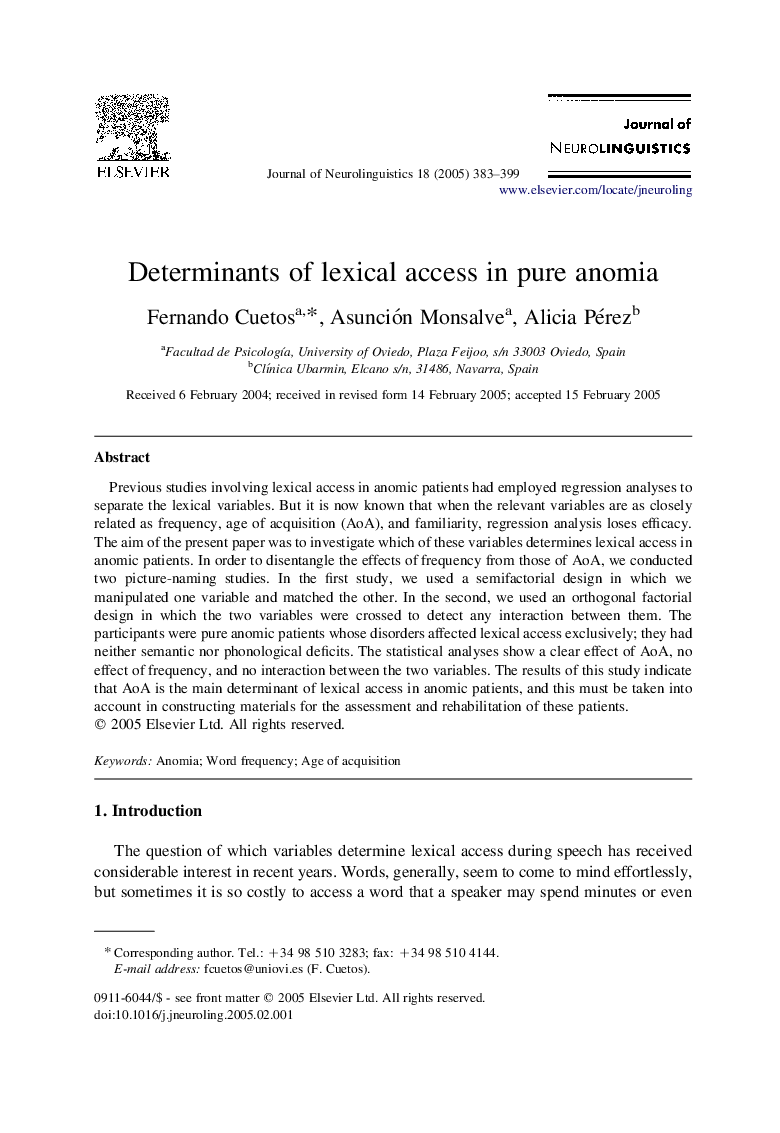| Article ID | Journal | Published Year | Pages | File Type |
|---|---|---|---|---|
| 10448843 | Journal of Neurolinguistics | 2005 | 17 Pages |
Abstract
Previous studies involving lexical access in anomic patients had employed regression analyses to separate the lexical variables. But it is now known that when the relevant variables are as closely related as frequency, age of acquisition (AoA), and familiarity, regression analysis loses efficacy. The aim of the present paper was to investigate which of these variables determines lexical access in anomic patients. In order to disentangle the effects of frequency from those of AoA, we conducted two picture-naming studies. In the first study, we used a semifactorial design in which we manipulated one variable and matched the other. In the second, we used an orthogonal factorial design in which the two variables were crossed to detect any interaction between them. The participants were pure anomic patients whose disorders affected lexical access exclusively; they had neither semantic nor phonological deficits. The statistical analyses show a clear effect of AoA, no effect of frequency, and no interaction between the two variables. The results of this study indicate that AoA is the main determinant of lexical access in anomic patients, and this must be taken into account in constructing materials for the assessment and rehabilitation of these patients.
Related Topics
Life Sciences
Neuroscience
Cognitive Neuroscience
Authors
Fernando Cuetos, Asunción Monsalve, Alicia Pérez,
